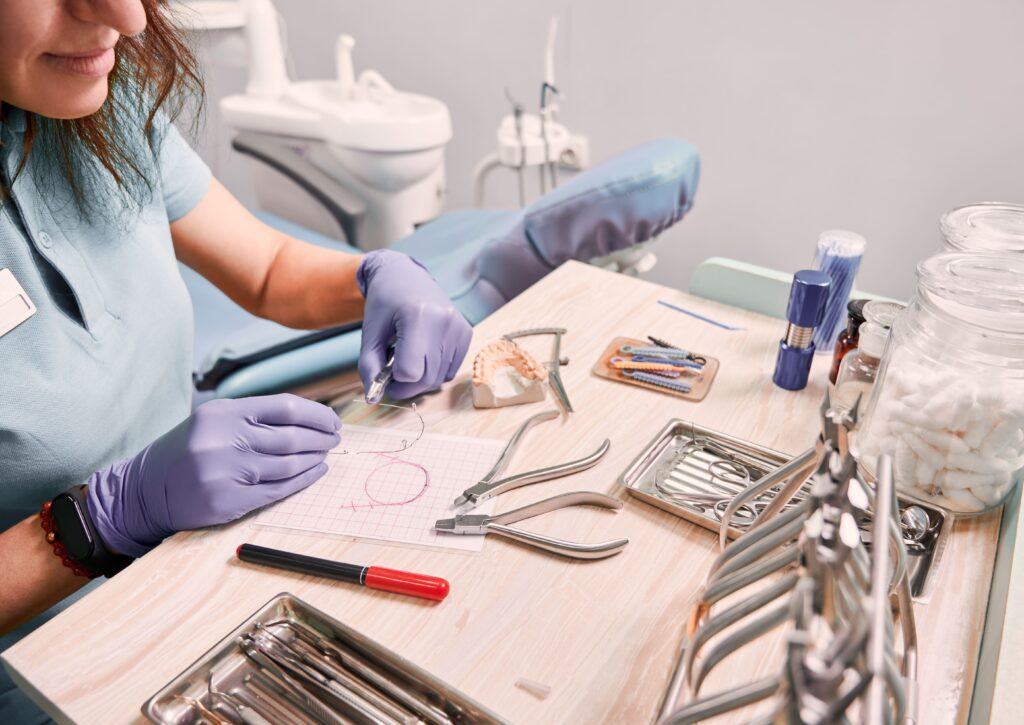Dentistry is entering an exciting era where cutting-edge technology is reshaping how we care for our teeth and gums. From artificial intelligence (AI) to laser treatments, digital impressions to 3D-printed crowns, modern dentistry is no longer just about drills and discomfort. Instead, it’s becoming faster, more accurate, less invasive, and a lot more comfortable for patients.
Let’s take a deep dive into how technology is bringing a revolution in oral health care.
1. Digital Dentistry: Precision at Its Best
Traditional methods used to rely on physical molds and manual procedures, which could be uncomfortable and time-consuming. But with digital scanners, dentists can now create highly accurate 3D images of a patient’s teeth within minutes.
Benefits include:
- Faster diagnoses
- More comfortable procedures
- Precise treatment planning
Table: Traditional vs Digital Dentistry
| Feature | Traditional Dentistry | Digital Dentistry |
|---|---|---|
| Impressions | Physical molds (uncomfortable) | Digital 3D scans (quick & painless) |
| Crowns/Bridges | Lab-created (weeks) | 3D-printed (same day possible) |
| X-rays | Film-based | Digital with less radiation |
| Planning | Manual measurements | AI-powered predictive modeling |
2. Artificial Intelligence (AI) in Dentistry
AI is now being used to detect cavities, gum disease, and even signs of oral cancer at early stages. AI tools can scan dental X-rays faster than the human eye and provide treatment suggestions with higher accuracy.
How AI helps:
- Identifies dental problems early
- Reduces human error
- Improves patient outcomes
3. Laser Dentistry: No More Scary Drills
Laser technology is transforming procedures like cavity filling, gum reshaping, and teeth whitening. The biggest benefit is that it’s less painful and requires minimal anesthesia.
Popular uses of lasers:
- Treating gum infections
- Removing tooth decay
- Performing biopsies
- Teeth whitening
4. 3D Printing in Dental Treatments
3D printing has brought a significant change in how dentists create crowns, dentures, and aligners. Earlier, these could take days or weeks. Now, 3D printing allows same-day solutions in many cases.
Applications:
- Custom dental implants
- Surgical guides for precise operations
- Temporary crowns and bridges
5. Teledentistry: Virtual Consultations at Home
Especially after the COVID-19 pandemic, teledentistry has gained popularity. Patients can consult dentists online through video calls and get advice or treatment plans remotely.
Advantages:
- Saves travel time
- Makes oral care more accessible
- Ideal for follow-ups and minor concerns
6. Smart Toothbrushes and Oral Health Apps
Smart toothbrushes with sensors are now able to track how well you’re brushing. Paired with mobile apps, they can show you:
- Missed spots
- Pressure applied while brushing
- Customized tips for better oral hygiene
Conclusion: A Healthier, Smarter Smile Ahead
The future of dentistry is not just about treating problems—it’s about preventing them with smarter tools. With digital advancements and AI support, patients can expect faster, safer, and more comfortable dental care experiences.
Whether it’s AI diagnostics, 3D-printed crowns, or painless laser treatments, technology is making oral care more efficient and personalized than ever before.

